By Teresa J. Brady, PhD, and Erin Latimer Meadows
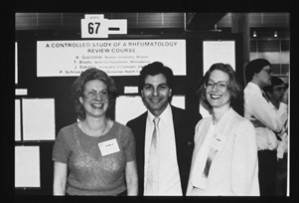
“What’s in a name?”
This question, famously penned by William Shakespeare, is often asked of organizations seeking to solidify their identities. Having gone through five name changes, the members of the Association of Rheumatology Health Professionals understand that these changes aren’t trivial; they are outward statements of the Association’s growth and evolving identity and professionalism.
At the time of its founding, the ARHP was assigned the name Paramedical Section by the Arthritis Foundation bylaws, and it was unpopular with members from the beginning. In 1968, just three years after the organization was established, members rallied to change the name to the Allied Health Professions Section to reflect the professional stature of the membership. Ten years later, in order to be inclusive of all professions, the name was changed to Arthritis Health Professions Section, and subsequently Arthritis Health Professions Association. The organization retained the AHPA name until it joined the American College of Rheumatology in 1994 and became the Association of Rheumatology Health Professionals.
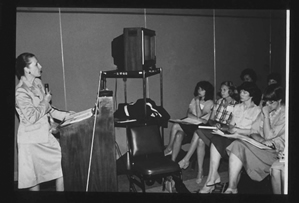
Five name changes in its first 50 years is a testament to the growth of membership, creation of new opportunities for members, and the organization’s overall position within rheumatology and the larger healthcare community.
The Evolution of Education
For many members, the foundation on which the ARHP has been built is the creation and dissemination of high-quality, clinically relevant educational materials and practice tools.
As the ARHP has grown in membership size, categories, needs, and sophistication, so have its educational products, and these products have consistently met the interests and needs of ARHP members. Early educational materials, developed in the late 1960s, included a booklet on home care and a manual for professionals working with people with arthritis — both published and distributed by the Arthritis Foundation. From there, the ARHP produced self-help and how-to manuals as well as a home-study course and the model core curriculum for teaching health professionals.
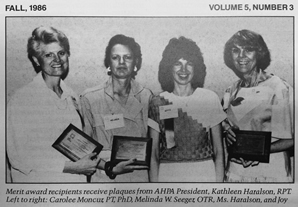
A key focus in the 1980s was role clarification among the various professions and explaining the role of health professionals in rheumatology care. This focus led to the development of the Outcome Standards for Rheumatology Nursing in 1983, Competencies for Physical Therapists in Rheumatology in 1985, and a paper outlining the role and function of occupational therapists in rheumatology in 1986.
In the 1990s, briefing papers were prepared on the roles of advanced practice nurses, occupational therapists, physical therapists, physician assistants, psychologists, registered nurses, rheumatologists, social workers, and the interdisciplinary team in the management of patients with rheumatic diseases.
These papers remain popular today, and the collection has recently been expanded to include papers on the roles of clinical nurse specialists, pharmacists, practice managers, and registered dieticians. In 1996, the ARHP first published one of its signature educational products, Clinical Care in the Rheumatic Diseases. This text was produced as a companion to the Primer on the Rheumatic Diseases and was designed to collate into a single publication state-of-the-art techniques for the clinical care of people with rheumatic diseases. The first edition was well-received, and the second and third editions were disseminated beyond the ARHP membership to health professional training programs — both nationally and internationally.
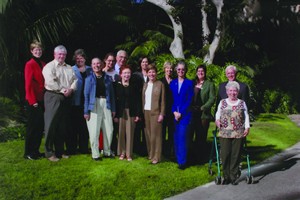
Not only has the ARHP tailored its educational topics to the needs of its members, it has also tailored the delivery of that education. In the late 1970s, long before PowerPoint, members needed slides for teaching both patients and students, and the Teaching Slide Collection was created to meet that need. More recently, as the role of nurse practitioners and physician assistants increased in rheumatology — and as the economy dictated a need for access to online education — online courses such as the Advanced Rheumatology Course and the Fundamentals of Rheumatology Course provide opportunities for growing segments of the ARHP membership and to offer educational opportunities in new formats and at different price points. No matter how delivered, the ARHP’s educational programs and practice tools have offered quality education to rheumatology health professionals in a variety of formats that meet their learning needs, budgets, and professional interests.
An Annual Pilgrimage for Enduring Education
It happens once a year. The location changes, but the intent remains the same: Bring rheumatology health professionals together to exchange ideas through the presentation of scientific papers and the more informal, but equally stimulating, hallway conversations.
No matter how technologically advanced the ARHP becomes, in-person opportunities have always been highly regarded among members, and the signature in-person event is the ARHP Annual Meeting — held in conjunction with the ACR Annual Meeting.
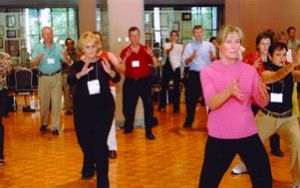
The first Annual Meeting was held in 1966 and was simply co-located with the ACR meeting until the 1980s, when the two meetings became increasingly integrated. Today, there is minimal distinction between ARHP- and ACR-sponsored sessions. In addition to the integration of ARHP and ACR programming, the ARHP Annual Meeting has grown in numbers — from 100 professionals in the early days to upwards of 1,000 in recent years. This steady growth parallels the overall growth of the ARHP and represents the continual investment rheumatology health professionals make in this educational and networking opportunity. More noteworthy than the increasing attendance and program integration has been the increase in the quality of science presented. While the early meetings presented more of the art of clinical care, strong science — both experimental and applied — now predominates.
This increase in quality is a reflection of the increase in sophistication of researchers working in rheumatology, driven primarily by rheumatology health professional research funding available from the ACR’s Rheumatology Research Foundation, the National Institutes of Health, and the Arthritis Foundation.
Furthering the Progress of Rheumatology Research
While the Annual Meeting is an organizational highlight, the flagship product of ARHP is unquestionably Arthritis Care & Research, the division’s professional journal. Discussions about the need for a journal to create a singular publication for the increasingly high quality and quantity of research produced by rheumatology health professionals began in the late 1970s. Exploring the feasibility of producing a journal formally began in 1983, and the first issue was published in 1988. There was, however, some early uncertainty about publishing a journal, including the financial return on investment and whether there would be a sufficient supply of high-quality research submitted.
To abate this uncertainty, the ARHP took a slow-and-steady approach to publishing. Originally, four issues were published each year. This number increased to six issues per year in 1996, and in 2008, the journal began monthly publication to meet the volume of high-quality research being submitted. The 1990s were focused on stabilizing the journal financially. However, with the move of the ARHP to the ACR and the creation of AC&R as a section of Arthritis & Rheumatism (now Arthritis & Rheumatology) — the stellar original journal of the ACR — AC&R gained a strong financial base and a bright future. The union with A&R facilitated role clarification between the ACR’s two journals and expansion of AC&R’s mission to increase coverage of broader clinical care issues, health economics, epidemiology, and public health research. In 2010, AC&R formally separated from A&R and became an independent journal. Since that separation, AC&R has consistently been ranked in the top 10 rheumatology journals worldwide, and the journal remains the leading source of cutting-edge information for rheumatology health professionals.
A Merger of Significant Importance
The ARHP was created at the time the American Rheumatism Association, precursor to the ACR, and the Arthritis Foundation merged in 1965. The ARHP remained within the Arthritis Foundation when the ARA left to create an independent organization, the ACR, in 1986.
In 1994, after assessing both the merits of merging two professional associations and the challenges of merging a predominantly health professional association with a predominately physician association, the ARHP joined the ACR. This merger has strengthened both organizations, fostered increased interdisciplinary communication and care, and modeled strong physician-health professional partnerships in addressing the challenges of arthritis and rheumatic diseases.
With the merger, the position of ARHP president was provided a voting position on the ACR board of directors, and the merging of the two organizations’ leaders has further increased in recent years. In 2010, a restructuring plan increased the number of ARHP members on ACR committees and vice versa — allowing all committees to have deeper expertise across both sides of the organization. The ARHP president became a voting member of the ACR executive committee in 2012.
As the ARHP and ACR continue to strengthen their merger at both the leadership and operational levels, both organizations will continue to thrive and demonstrate broad interdisciplinary collaboration.
50 Years of Connections, Collaborations, and Camaraderie
It is almost impossible to celebrate 50 years of the ARHP without celebrating the countless professional and personal relationships fostered through membership in the ARHP, as it is truly the people — members, volunteers, and staff — who regularly deliver on the Association’s mission year after year.
For most of the ARHP’s more than 1,300 members, the ARHP is their secondary professional association; many members also belong to their discipline-specific professional association. Despite this, ARHP members have devoted many hours of volunteer work to the Association over many years of active involvement because the ARHP provides a strong mix of professional development, interdisciplinary collaboration, and meaningful involvement that makes it unique in the professional lives of its members.
Throughout its history, ARHP leaders have outwardly championed the Association and reflected on the things that kept them motivated to invest time and energy into it. Most often, consistent with the charter members’ vision, the opportunity for collaboration across disciplines and a spirit of productivity that transcends personal or disciplinary agendas have been called out as key reasons these leaders remained committed over time. ARHP members also regularly note opportunities for professional growth and mentoring, friendships with dedicated and insightful colleagues, and the opportunity to provide tangible benefits to people with arthritis and rheumatic diseases as important motivators for involvement.
Over 50 years, the ARHP has created an environment where new members are welcomed and mentored, long-term members have the opportunity to pay forward the warm welcome they received, and all members have the opportunity to make an impact on the organization and their profession as well as to establish lifelong friendships. For many, this stands out as a true differentiator between the ARHP and other associations.
The Next Chapter
Inevitably, health care will continue to evolve, and rheumatology is poised to remain a pioneering subspecialty with a strong need for collaborative, connected, and fully integrated care teams. There is no doubt the ARHP will continue to meet the needs of its members who serve in various roles on collaborative rheumatology care teams. And rheumatology health professionals will continue to find leadership and strong vision for rheumatology education, practice, research, and advocacy through their memberships in the ARHP.
No matter what the change in the overall healthcare environment, one thing is certain: The ARHP will continue to grow, evolve, and meet the needs of its members so they are able to provide quality care for their patients and focus on research that will lead to new treatments and cures for the millions people with rheumatic diseases.
Relying on lessons from its rich history, and with a strong vision for the future, the ARHP will welcome its centennial remaining the rheumatology resource for health professionals.


